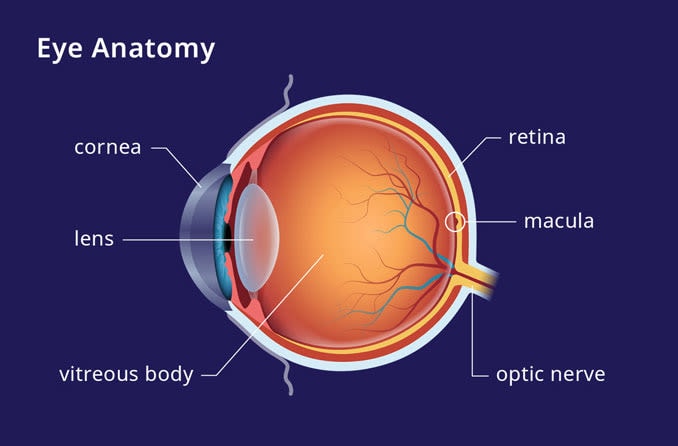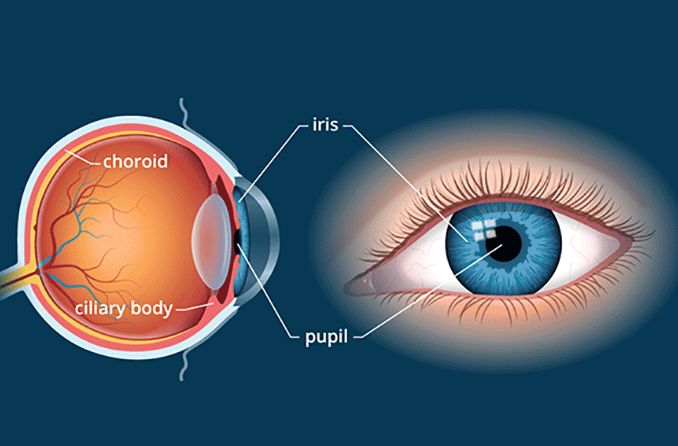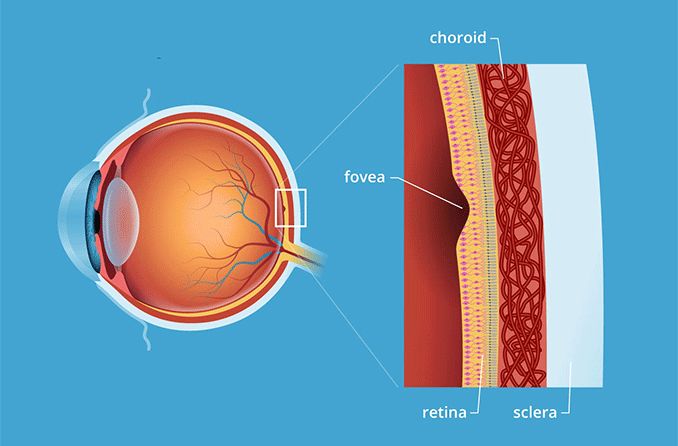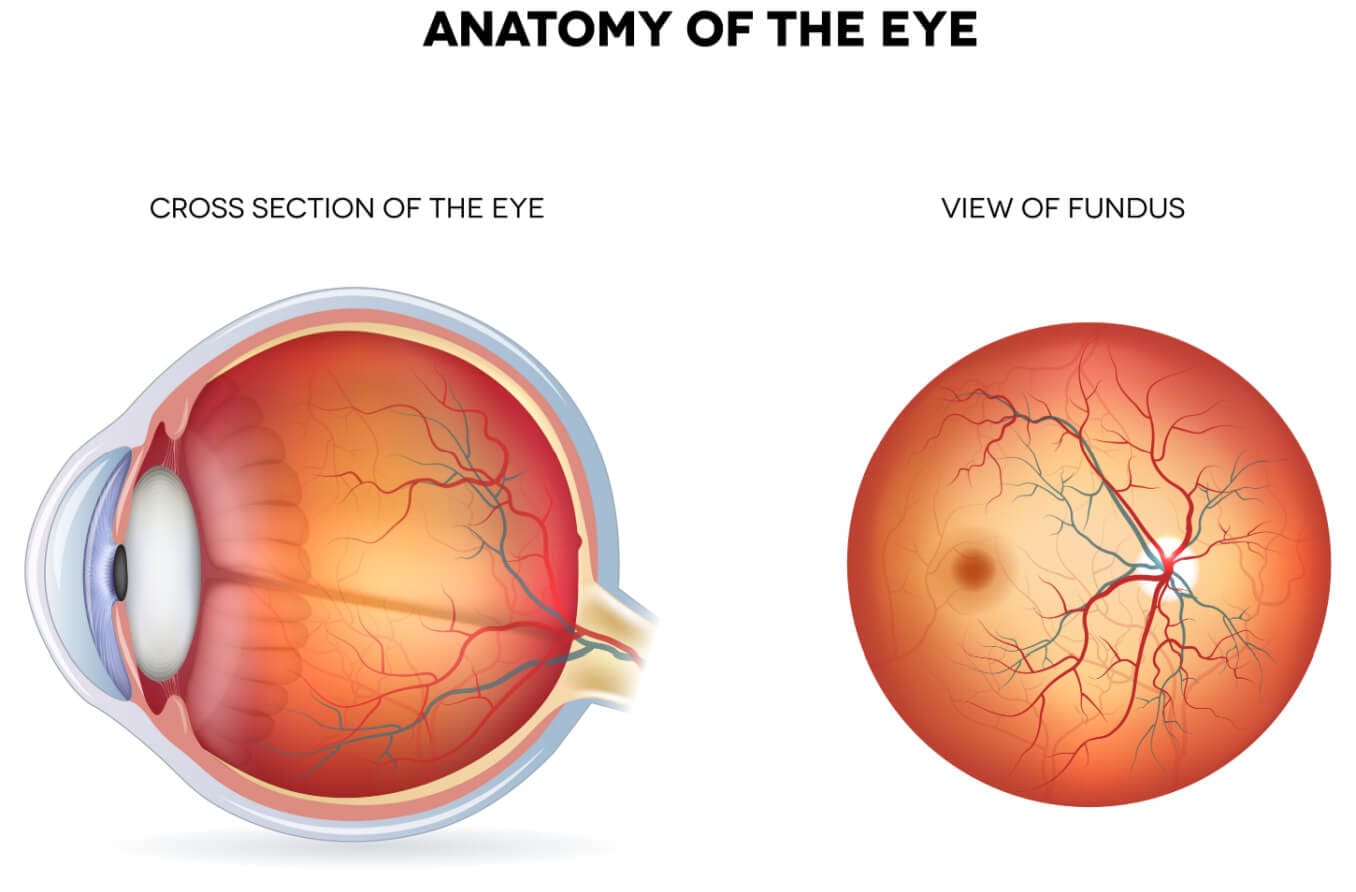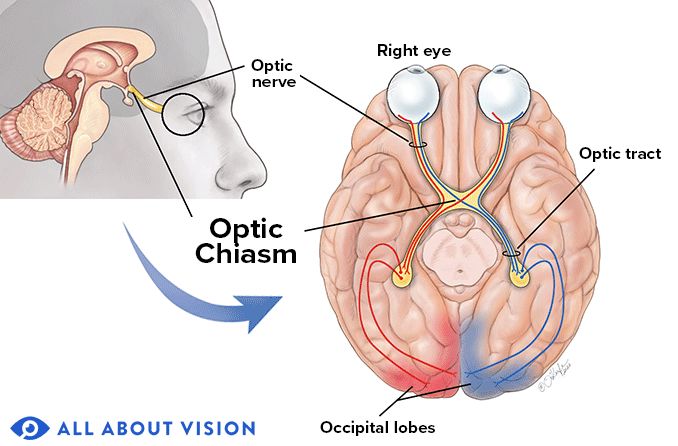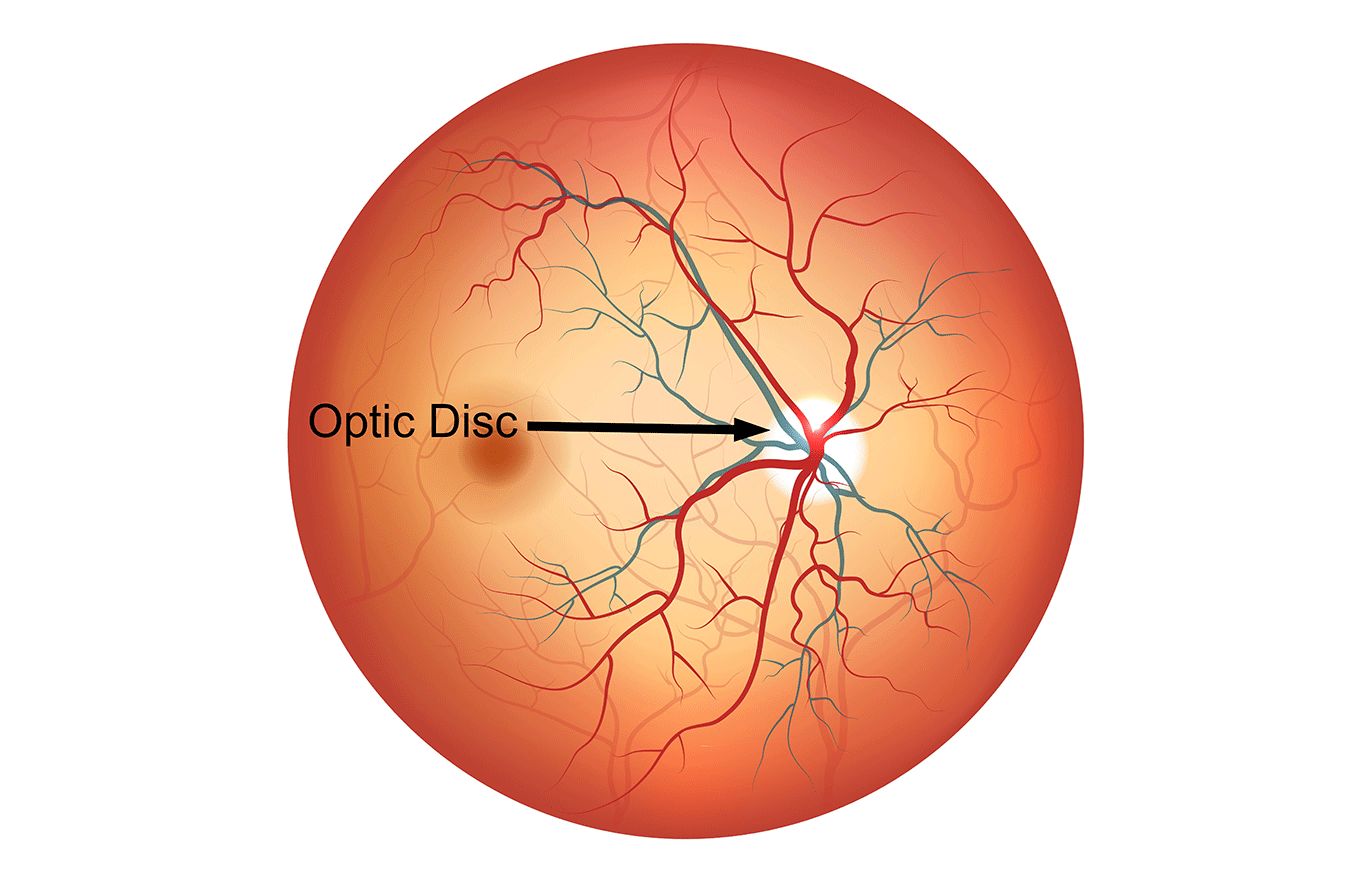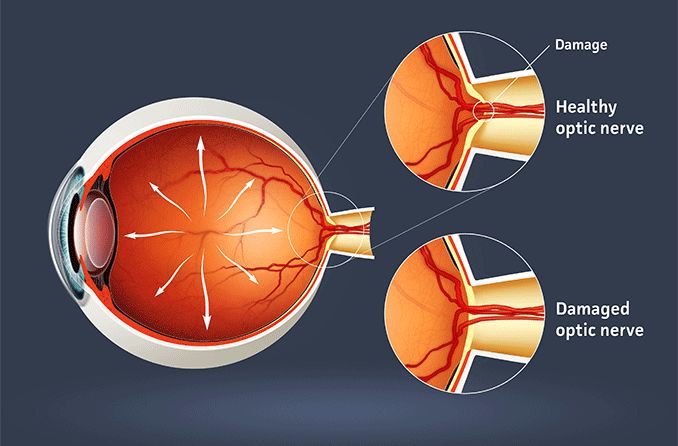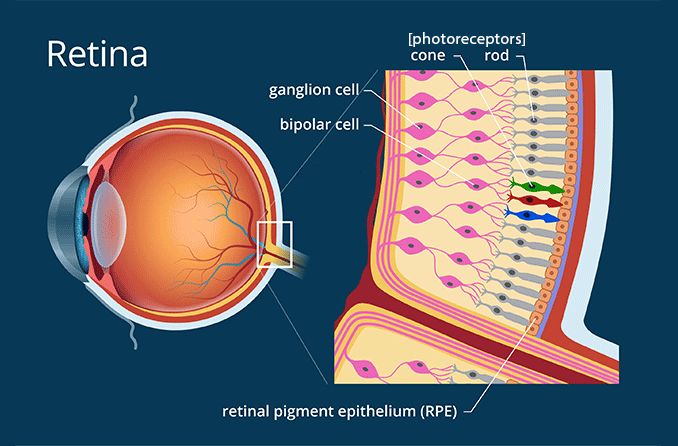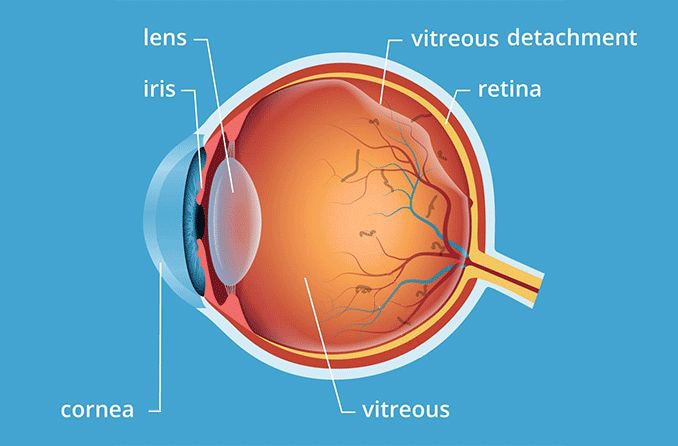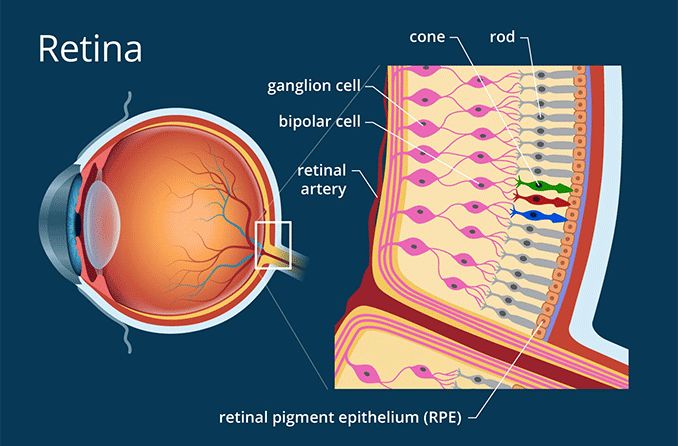What is the macula lutea?
The macula lutea — more commonly called the macula — is the most sensitive spot in the center of the light-sensitive retina in the back of the eye. The macula is responsible for visual acuity, central vision and color vision.
“The macula is the area of the retina that allows us to see 20/20,” says Maria Richman, OD, spokeswoman for the American Optometric Association. “It is the small and highly sensitive part of the retina that’s responsible for detailed central vision. The macula allows one to appreciate detail and perform tasks that require central vision, such as reading.”
The macula makes it possible to see in great detail while the rest of the retina provides peripheral (side) vision.
Why is it called macula lutea?
Like many medical terms, macula lutea is Latin: Macula means “spot” and lutea means “yellow.” The macula lutea is a very small spot in the central retina — it’s just 5.5 millimeters (less than a quarter-inch) in diameter.
Also, when viewed or photographed by your eye doctor, the macula lutea has a yellowish appearance (in contrast to the rest of the retina, which is red). The yellow color is due to the macular pigment, which is composed mainly of lutein and zeaxanthin from your diet.
Macular pigment protects cells in the macula from the potentially harmful effects of high-energy visible (HEV) blue light from the sun.
Anatomy of the macula
There are two types of photoreceptor cells in the retina. These cells — called cones and rods — make our sense of vision possible by converting light rays into signals that are transmitted to the brain.
There is a very high concentration of cone photoreceptor cells in the macula, which are responsible for our color vision and our ability to see fine details.
It’s estimated that there are 6 million to 7 million cone cells in the retina, with most of them located in the macula. The highest concentration is in the fovea (or fovea centralis ), which is a central pit within the macula that contains only cone cells.
Most rod photoreceptor cells are located outside the macula. While they don't provide high-resolution or color vision, rod cells provide peripheral vision, perceive movement and shades of gray, and can function in low-light conditions. There is an estimated 120 million rod photoreceptor cells in the retina.
The macula (specifically, the fovea ) is the only area of the retina where 20/20 vision is attainable and where color and fine detail can be distinguished.
Consequently, the macula is responsible for enabling the sharp visual detail that's so important for activities like driving, recognizing faces, watching TV, using a computer and engaging in all other visual tasks that require an ability to see details.
SEE RELATED: Commotio Retinae
Conditions that affect the macula
Conditions that affect the macula and cause vision loss include:
Age-related macular degeneration. Macular degeneration (AMD) is an age-related deterioration of the macula and the leading cause of permanent vision loss for people ages 50 and older.
Diabetic macular edema. Also called DME, this swelling of the macula is caused by leaky blood vessels in the retina that have been damaged from the effects of diabetes (diabetic retinopathy). Learn more about diabetic retinopathy and DME.
Central serous retinopathy. Central serous retinopathy is the accumulation of fluid under the retina that can affect the macula and cause blurry vision. The exact cause is not fully understood, but it appears to be stress-related and most often affects middle-aged men.
Macular hole. This is a small break in the macula that can cause blurry or distorted vision. Macular holes are usually caused by age-related changes in the eye. If left untreated, a macular hole can cause a detached retina, a sight-threatening condition that requires immediate medical attention.
Macular dystrophies. A number of rare, inherited conditions that affect central vision, macular dystrophies can appear in childhood but some are not diagnosed until later in life. The most common form of juvenile macular dystrophy is Stargardt’s disease.
Epiretinal membrane. Also called macular pucker or cellophane maculopathy, an epiretinal membrane is a thin sheet of fibrous tissue that can grow onto the surface of the macula. Epiretinal membranes can cause blurred or distorted vision, and, in some cases, surgery may be required to restore vision.
SEE RELATED: Best disease
Cherry red macula
A cherry red macula is a rare condition characterized by a reddish area developing at the center of macula. According to Richman, one of the most common conditions causing a cherry red macula is a lipid storage disorder that leads to central retinal artery occlusion.
When lipids (fatty acids) accumulate in harmful amounts in various tissues and cells in the body, they can cause health problems. Symptoms may appear early in life or develop in the teen or even adult years.
“Over time, this storage of excessive fats can cause permanent damage to cells and tissues in the brain, the peripheral nervous system and in other parts of the body,” Richman says.
“Retinal artery occlusion refers to blockage of the retinal artery carrying oxygen to the nerve cells in the retina at the back of the eye. The lack of oxygen delivery to the retina may result in severe loss of vision,” she adds.
Management of cherry red macula depends on the cause, which can include Tay-Sachs disease in addition to retinal artery occlusion and several other diseases and conditions.
Keeping your macula lutea healthy
The best way to protect the health of the macula of your eyes for a lifetime of good vision is to have routine eye exams.
During a comprehensive eye exam, your optometrist or ophthalmologist can inspect and evaluate the health of your macula lutea and detect potential problems before you experience any vision loss.
Another essential part of keeping your macula healthy is decreasing your risk for diabetes and cardiovascular disease through diet and lifestyle changes.
SEE RELATED: Retinal Dystrophy
